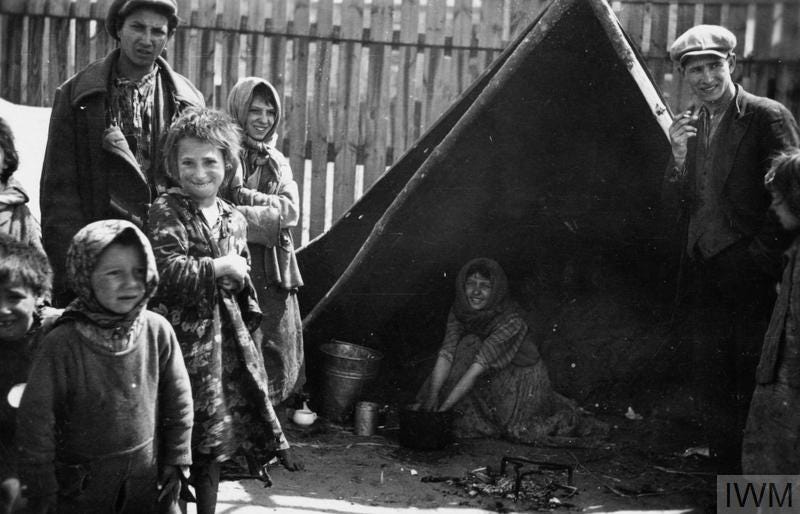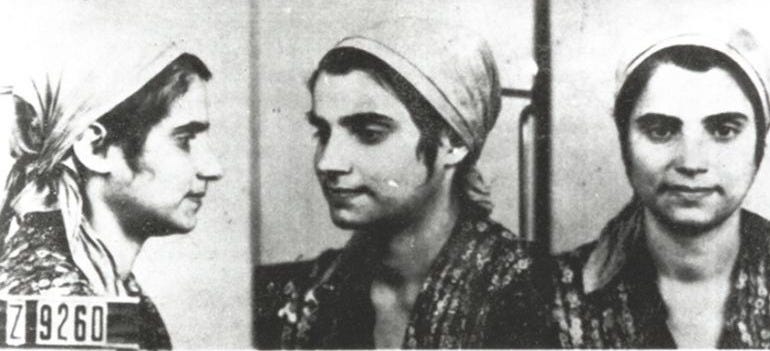82 Years Later: Remembering Himmler’s Roma Deportation Decree and the Ignored Holocaust
A Forgotten Chapter of the Holocaust. How the Nazis' Campaign of Destruction Targeted the Roma People
When we hear the word "Holocaust," most of us think of the six million Jews murdered by the Nazis. But the Holocaust wasn’t just about the Jews. The Nazis’ terror extended far beyond the Jewish community, targeting millions, including Black people, disabled individuals, Slavs, Gay people, Jehovah whiteness and political dissidents.
82 years ago, on December 16, 1942, Heinrich Himmler, the head of the Nazi SS, issued a fate sealing decree, the Decree to Deport the Roma, sending thousands of Roma to a special "Gypsy Camp" in Auschwitz-Birkenau. This marked a critical point in the Nazi campaign to wipe out those they saw as racially inferior. Roma were specifically targeted along with other non-Aryans, fitting the Nazis’ vision of racial purity.
The Roma genocide, known as the Porajmos or "The Devouring," remains one of the darkest, most overlooked chapters in Holocaust history. The Roma, also known as Romani or Gypsies, are an ethnic group with roots in northern India, dating back more than 1000 years. They have been living in Europe since the 14th century and today number around 10-12 million.
Himmler’s decree was part of a long campaign to destroy the Roma, which began in the 1930s.
In 1333: Sinti and Roma were subjected to intense discrimination, increasingly deprived of their rights and excluded from society. The first Sinti and Roma are interned in concentration camps followed soon after.
July 14, 1933, the "Law for the Prevention of Hereditarily Diseased Offspring" was enacted, leading to the forced sterilization of Roma and others deemed “undesirable”.
December 12, 1935: Himmler founded the Lebensborn program, aimed at creating a "racially pure" Aryan race, including kidnapping children for Germanization in Nazi occupied territories.
January 1936: In accordance with the Nuremberg Laws on Race and Citizenship (September 15, 1935), Reich Interior Minister Wilhelm Frick issued a decree stating: “Alien races include all other races; in Europe, these are, apart from the Jews, as a rule, only the Gypsies.” Marking the beginning of the Nazi regime's systematic discrimination against the Roma, alongside Jews.
December 08, 1938: Himmler Decree on “Combating the Gypsy Plague. Himmler ordered police to register all Roma and Sinti living in Nazi Germany and to classify them racially. He also called for the physical separation of Roma and Sinti from so-called “Aryan” Germans.
December 16, 1938, the "Cross of Honor of the German Mother" was introduced to encourage Aryan women to bear more children for the program.
December 1, 1939, the Reich Central Office for Combating Homelessness issued an order to round up Roma people into ghettos and concentration camps under the pretext of "racial hygiene."
Starting on 1939 The Nazi authorities decided to deport Roma to newly occupied territories in Poland. The first mass deportation to the east started in 1940 and carried until the end of the war. At the same time, German forces in the Soviet Union and in the Balkans also systematically executed the local Roma.
The world did not act quickly enough.
Before Himmler’s decree in December 1942, an estimated 20,000-25,000 Roma had already died due to forced labor, sterilizations, and brutality. After his decree, the death toll skyrocketed, to more than 450,000 Roma murdered, mainly through executions, starvation, disease, and gas chambers.
Just six days before Himmler’s decree, Polish ambassador Edward Raczyński warned the Allied governments about the Nazi genocide. He delivered a harrowing message known as Raczyński’s Note, this document detailed the horrors of the Holocaust, one of the earliest, most comprehensive accounts of the Holocaust made available to the Allies but they ignored it, allowing the atrocities to continue, affecting not only Jews but Roma as well.
By May 1944, the first sign that the camp was going to be “liquidated”. Auschwitz-Birkenau camp leadership started to prepare for the arrival of over 400,000 Hungarian Jews, most exterminated in gas chambers. As part of their preparations, camp commandant Rudolf Höss sought to clear out the “Gypsy Family Camp” to make room for the thousands of new prisoners. When SS men arrived in the Romani section of Auschwitz-Birkenau, Roma refused to leave their barracks and armed themselves for a fight to the death, now known as “The Romani Uprising of Auschwitz-Birkenau”.
The Roma Holocaust Memorial Day is now marked on 2 August - the anniversary of the day in 1944 when the SS sent the remaining men, women and children from the so-called ‘Gypsy Camp’ in Auschwitz-Birkenau to their deaths. Between 2,897 and 4,300 Romani people were murdered in the gas chambers on this night. The European Parliament declared this date the European Holocaust Memorial Day for Sinti and Roma in 2015
The story of the Roma was long buried
Germany was the most aggressive in persecuting the Roma, establishing concentration camps and sending them to Auschwitz. In 1982, West Germany officially recognized the Roma genocide, but it wasn’t until 1997 that they issued a formal apology.
Occupied Norway in 1940, the Norwegian government deported Roma to forced labor camps and Auschwitz. For decades, Norway denied its role in this persecution, how Norway had their own discriminatory laws since at least 1800’s against the Roma People or how it continued systematic discriminatory policies for until today . Norway only acknowledged the Roma suffering in 1997 and issuing a formal apology in 2011.
Similarly, in France, the Vichy government collaborated with Nazi authorities, rounding up Roma for deportation to concentration camps. It wasn’t until 1994 that France acknowledged its responsibility, and only in 2000 did they apologize.
In Austria, Roma suffered similar policies, it was not until 1995 when Austria marked the official recognition of the Roma genocide, with an apology in 2004.
Hungary’s involvement also took time to be recognized, with apologies occurring in the 2000s.
The persecution of the Roma genocide didn’t end with the war.
After WWII, the Roma continued to face severe discrimination and marginalization across Europe. Today, the Roma still struggle with poverty, racism, and exclusion. In countries like Romania, Bulgaria, Hungary, and Slovakia, where large Roma populations exist, they often live in impoverished, segregated neighborhoods with limited access to essential services. Roma children are disproportionately placed in segregated schools, facing lower educational outcomes, and targeted for their ethnicity, including in Norway.






